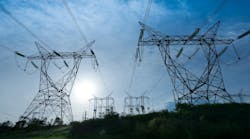The Institution of Engineering and Technology (IET) and KEMA are announcing a comprehensive study into the costs of building new high voltage power cables. The IET, in partnership with the energy consultancy KEMA, will produce an independent report comparing the costs of laying power transmission cables under the ground, in tunnels or under the sea against the costs of building new overhead lines.
The report, which is due for release in 2011, is intended to provide an objective and independent basis for assessing the overall costs of these different methods for transferring power through Britain’s electricity transmission system. It will also provide an indication of the environmental impacts of the different technologies.
Welcoming the study, Charles Hendry, Minister of State for Energy said: “Getting electricity transmission right will be crucial to making sure that we get the new energy infrastructure we need on stream and on time. Over the coming years major network reinforcements will need to be undertaken and it is essential that this is done on the basis of informed discussion and the best available knowledge, if this work is to carry public support."
“This independent and authoritative assessment will give more clarity on the relative costs and impacts of high voltage overhead lines compared to undergrounding.”
A spokesman from the IET said: “This study aims to provide an independent and objective basis for assessing the whole life costs of new underground and subsea high voltage transmission cabling projects and comparing those costs with overhead lines.
“We have joined with KEMA, a highly respected global energy consultancy, to conduct this research. They will draw on a wide range of sources to provide a comprehensive and authoritative assessment.
“Whilst recognizing that any individual project will incur specific costs, it is believed that the final report could provide a well-informed baseline position when considering each approach.”
This initiative to conduct an independent study has support from both the Department of Energy and Climate Change and the Infrastructure Planning Commission. National Grid has agreed to fund the study.
The study will examine technical and cost issues around the different methods, looking at case studies from both the UK and abroad, as well as drawing on knowledge from a wide range of organizations, companies and academics.
It will aim to give an indication of the impacts on costs from a variety of factors such as terrain, geology, length of cable, power carrying capacity of cables, voltage and network operating characteristics.
KEMA will provide the technical content and analysis, while the IET will provide quality assurance and engineering oversight for the study. As part of the information gathering process, the IET will host a seminar where organisations will have the chance to contribute facts and cost information about the different technologies.
National Grid is funding the project, but will only be inputting to the work alongside a wide range of other external stakeholders. This will ensure the independence of the project, whose final output will be owned by the IET and KEMA.

